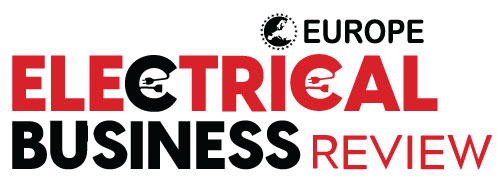Thank you for Subscribing to Electrical Business Review Weekly Brief
I agree We use cookies on this website to enhance your user experience. By clicking any link on this page you are giving your consent for us to set cookies. More info
Driving Innovation: Key Factors Shaping Europe's Cable Assembly Market
The cable assembly industry is a crucial segment within Europe's broader electrical and electronics sector.

By
Electrical Business Review | Friday, March 07, 2025
Stay ahead of the industry with exclusive feature stories on the top companies, expert insights and the latest news delivered straight to your inbox. Subscribe today.
The cable assembly industry is a crucial segment within Europe's broader electrical and electronics sector. It is vital in numerous industries, including automotive, aerospace, telecommunications, healthcare, industrial automation, and renewable energy. With the rise of Industry 4.0, increasing demand for high-speed data transmission, and the shift toward sustainable energy solutions, the landscape of cable assembly is undergoing significant transformation. It is expected to grow steadily over the next few years, driven by advancements in automotive electrification, increasing demand for high-speed connectivity solutions, and the expansion of industrial automation.
Vital Trends Shaping the Industry
One of Europe's most significant drivers of the cable assembly industry is the rapid adoption of electric vehicles. With stringent EU regulations promoting emissions reduction and sustainable transportation, the demand for EVs has surged. Cable assembly is critical for power distribution, battery connections, and charging infrastructure in EVs. This has increased investment in high-performance, high-voltage cable assembly designed to handle greater electrical loads and ensure safety.
The ongoing rollout of 5G networks across Europe has heightened the need for advanced cable assembly capable of handling high-frequency signals with minimal interference. As telecommunication companies expand their infrastructure, fibre optic and radio frequency cable assembly have seen increased demand. The shift towards high-speed data transmission and connectivity solutions has also fueled growth in this sector.
With European industries rapidly adopting smart manufacturing and automation, the demand for high-performance cable assembly has risen significantly. Factories and industrial settings require robust, durable, and flexible cable assembly to support robotic applications, machine-to-machine communication, and IoT-enabled systems.
Environmental concerns and stringent EU regulations on electronic waste and hazardous materials are reshaping the cable assembly market. Manufacturers increasingly focus on sustainable materials, recyclable components, and lead-free soldering processes.
Specific advancements in materials being researched and developed for cable assembly include using lightweight, high-strength composites to reduce overall weight while maintaining durability and flexibility. Manufacturers are also exploring the development of high-temperature resistant materials to enhance performance in demanding environments, as well as the incorporation of biodegradable and recyclable materials to align with sustainability goals. Additionally, advancements in insulation technologies, such as cross-linked polyethene (XLPE) and fluoropolymers, are being investigated to improve electrical performance and reduce signal loss in cable assembly.
The shift to renewable energy sources, such as wind and solar power, boosts the demand for specialised cable assembly in energy transmission and storage. The healthcare industry is also expanding its reliance on sophisticated medical devices, many of which require highly specialised cable assembly. The need for high-quality, bio-compatible, and sterilisable cable assembly is growing, from imaging equipment and patient monitoring systems to wearable medical technology.
Navigating the Challenges through Innovation
Despite the positive growth trajectory, the European cable assembly industry faces several challenges that manufacturers and suppliers must navigate. The global supply chain crisis, exacerbated by geopolitical tensions, energy shortages, and economic uncertainties, has impacted the availability of raw materials such as copper, aluminium, and specialised plastics. This has led to increased production costs and longer lead times for manufacturers.
The cable assembly industry relies heavily on skilled labour for design, assembly, and quality control. However, many European countries are experiencing workforce shortages, particularly in technical and engineering roles. The industry must invest in training programs and automation to address this issue.
European regulations on electrical safety, sustainability, and electronic waste disposal complicate manufacturing processes. Compliance with standards such as the Restriction of Hazardous Substances (RoHS) and Waste Electrical and Electronic Equipment (WEEE) directives requires significant research, development, and testing investment.
European companies focus on quality and reliability to justify higher prices than lower-cost Asian manufacturers. They invest in innovation and customisation, offering specialised cable assembly for aerospace and medical technology industries. Additionally, enhancing production efficiency through automation helps reduce costs and improve turnaround times. Building strong local client relationships emphasises customer service and fostering loyalty. Some firms also explore reshoring production to shorten supply chains and mitigate global sourcing risks.
Unlocking Potential for Growth
Despite these challenges, the European cable assembly industry has several opportunities to explore for sustained growth and innovation. Manufacturers can tap into growing demand in Eastern European and non-EU markets, where industrial expansion and infrastructure development are increasing. Companies can cater to industries requiring stringent quality standards, such as aerospace, defence, and medical technology, by offering highly customised and specialised cable assembly.
Leveraging automation, robotics, and AI-driven quality control systems can improve production efficiency and reduce reliance on manual labour. Investing in research and development for advanced materials, miniaturised cable assembly, and high-speed data transmission solutions can position European manufacturers at the forefront of innovation.








